
-<>-
Index
-<>-
Mathematics
-<>-
Alphabet Table & Gematria Systems
-<>-
-<>-
-<>-
-<>-
Shortcuts and the Rotation Method
-<>-
How the Numerical Bible codes Work
-<>-
-<>-
-<>-
In the beginning God spoke the Universe into existence.
Psalm 33:6
“By the word of the Lord were the heavens made; and all the host of them by the breath of his mouth.”
God also knew everything from the beginning.
Isaiah 46:10
“Declaring the end from the beginning, and from ancient times the things that are not yet done, saying,
My counsel shall stand, and I will do all my pleasure:”
He likes to hide things.
Proverbs 25:2
“It is the glory of God to conceal a thing: but the honour of kings is to search out a matter.”
He even uses riddles and parables:
Ezekiel 17:2
“Son of man, put forth a riddle, and speak a parable unto the house of Israel;”
Mathematics is the language of the universe. Everything in our universe can be measured in numbers, whether it be length, width, depth, height, weight, mass, temperature, speed, or time itself. In this book, we will see that God encoded the Bible with numeric codes. The Bible was written in Hebrew (Old Testament) & Greek (New Testament). And every letter or word there has a numerical value attached to it. This concept is called gematria.
-<>-
God created patterns in this universe that physicists have pondered on for centuries. They keep asking the questions: “What is the mystery of the fine-structure constant?”, “Why is the golden ratio everywhere?”. But even more enigmatic is the number 777, which is so little known. Instinctively, Christians know this number represents God in some way or another.
This book will show you the depths of number 777 like no one else has ever shown you.
-<>-
In this book, we will go into riddles, Bible codes, the gematria of words and phrases, physics codes, universe codes and 777 codes.
The gematria codes in this book are found using the Westminster Leningrad Codex (WLC) for the Hebrew Old Testament (O.T).
It is the oldest complete manuscript we have of the Hebrew Bible a.k.a Old Testament, and It dates back to around 1008 AD.
Another authoritative contender according to the experts is the Dead Sea Scrolls, but it misses large portions of the O.T.
-<>-
We don’t have any original writings of the Bible and only copies. In-fact the oldest copy of the Old Testament is the Greek Septuagint translated by the order of Alexander the Great. The English King James Bible used the ordering of verses from the Septuagint because there are differences between it and the WLC. The codes of this book are found using an interlinear Hebrew-English WLC, that is a WLC that has chapters and verses organized after the King James Bible (or you might say the Septuagint).
And interlinear Bibles on the web can differ, I am working to make my database as good as correct as possible, but you can never expect to get a 100% accurate word for word Old Testament and Greek New Testament. This is noted by the KJV authors also.
As for textual differences, we see they are uncommon in the Old Testament, but more common in the New Testament.
-<>-
The Scrivener’s Textus Receptus 1894 is used for Greek New Testament (N.T), and It has been edited and republished several times.
The first release was in 1516 by Erasmus, followed by another in 1519 which was used by Martin Luther; who led the protestant reformation. This text was used when translating the New Testament into English by William Tyndale, and the English King James Bible (KJV) that I use for all verses translated in English here. Eventually, we ended up with the 1894 version.
Also note that we do not have any original manuscripts of the Bible, only copies of them. Why? Take the example of the latest writings of the Bible in the N.T. They were written on papyrus that decades with time. Many think it was the Catholic Church that watched over these texts, but that was not the case. It was the early churches who were that authority. These early churches, all the way back to the first century AD, made sure that the texts of the N.T were copied to be preserved throughout the centuries.
And the Jews have always preserved their Old Testament. God truly made sure that the Bible would be available to us.
-<>-
The Torah is the first five books of the Bible. There are 4 different versions of the Torah today that are considered valid, with only 9 differences in them found in 9 verses. It is quite waterproof due to the strict customs of the Hebrew scribes that copied the Torah in the ancient days. It was very precious to them and still is.
The Torah is the foundation of the Bible, and it is quite central in this book since most codes here are from its verses.
-<>-
Genesis chapter 11 tells us about the Tower of Babel and how humanity had only one language when they started to build it.
And then God sent down angels to confuse them by making them talk in different languages.
In other words: God is the author of the ancient languages, with Hebrew being one of them.
-<>-
And as you will see later in this chapter, all Hebrew & Greek letters have a number attached to them, or in other words: numerical value.
And this is what this book is all about. Because God decided to do the most profound codes of the Bible using letters as numbers.
-<>-
You can’t understand this book without truly knowing this chapter. If you have a very poor memory then write down the abbreviations & terms here on some paper to have by your side as you read on into the numerical codes of this book.
I will not lie to you and tell you that this is an easy & simple book to understand, but you can understand this book through effort.
-<>-
Prime numbers can only be divided by themselves or 1. Number 1 was the first prime until the 1800s until they changed their mind and changed it to number 2 as the first prime instead. Still, God considers number 1 as the first prime. Primes are also important in nature.
All numbers except 1 can be divided into other primes called prime factors. So, primes are like the building blocks of mathematics.

769 = Pri(137 (inverse α)) = “inverse Alpha” (E s) = CW of Vs(6507 = 1000 + Pri(729 (α)))
5897 = Pri(777) = PP(381 = C.Hex(7) + C.Hex(7) + C.Hex(7))
= Happy(800 + 74 “gematria” (E o)) = Happy.Pri(131 = Palin(23 “riddles” חידות (r)))
-<>-
-<>-
Composite numbers are the opposite of a prime. It can be divided by more than itself or 1.
The easiest way to find the order of a composite is to just remove the number of primes up to that number.
Example: 777 is composite number 639 since there are 138 primes (773 = Prime number 138) up to that number.
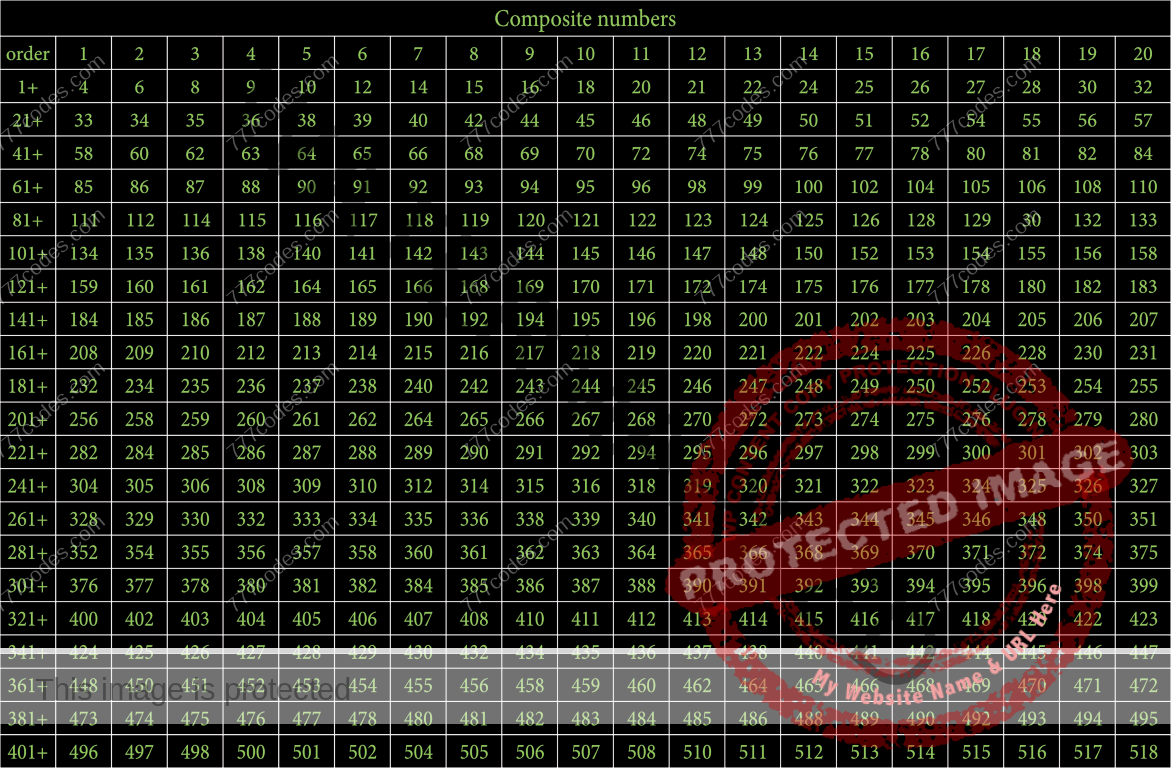
178 = Comp(137 (inv. α)) = 2x 89 “codes” (E ro) = 31-gonal(4) [314 (π)]
936 = Comp(777) = 800 + Tri(16 “codes” קודים) = “circle” κυκλος (sr7+sr37+sr73)
-<>-
-<>-
Pythagorean prime numbers is a prime number that can be expressed in the form of 4*n + 1.
Example: 13 is a Pythagorean prime since it can be expressed as 4*3 + 1.
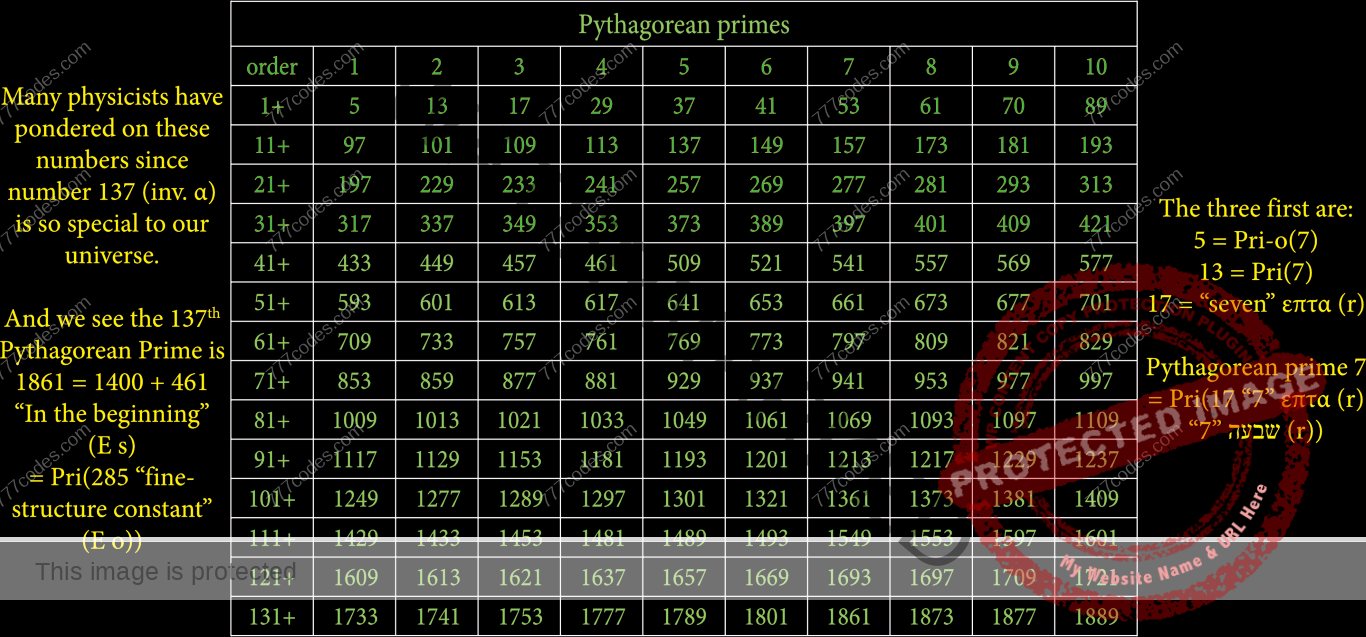 -<>-
-<>-
-<>-
A number is happy when it reaches number 1 as you square its digits and add in steps.
Example: Number 94 is happy because: 9*9 + 4*4 = 97 – – -> 9*9 + 7*7 = 130 – – -> 1*1 + 3*3 + 0*0 = 10 – – -> 1+0 = 1.
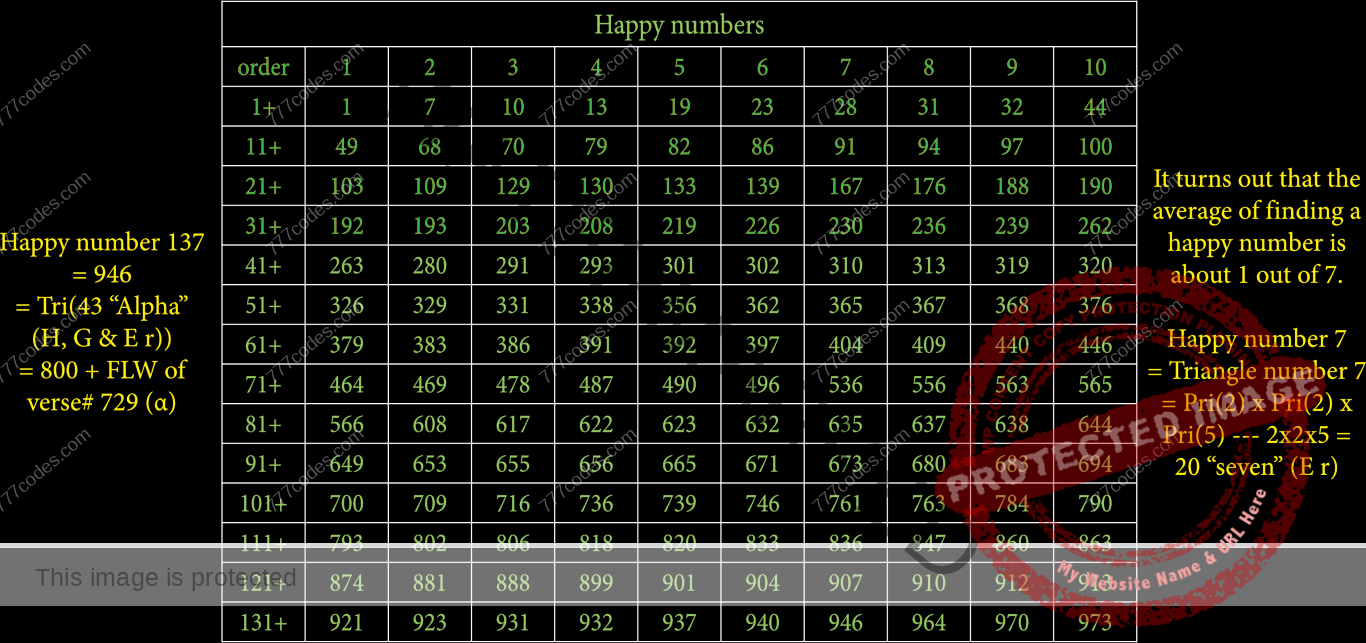
-<>-
-<>-
Lucky numbers will be demonstrated by using the first 30 numbers: 1, 2, 3, 4, 5, 6, 7, 8, 9, 10, 11, 12, 13, 14, 15, 16, 17, 18, 19, 20, 21, 22, 23, 24, 25, 26, 27, 28, 29, 30.
First, remove every second number. You see that the first number after one is three.
Now remove every third, then every seventh, and finally every ninth e.c.t. The remaining numbers are Lucky numbers.
 -<>-
-<>-
-<>-
Palindromic numbers or a Palindrome is a number that is the same read forward and backward. The 27 first are:
0, 1, 2, 3, 4, 5, 6, 7, 8, 9, 11, 22, 33, 44, 55, 66. 77, 88, 99, 101, 111, 121, 131, 141, 151, 161, 171
-<>-
-<>-
Palindromic Primes are Palindromic numbers that are Prime numbers also. The 27 first are:
1, 2, 3, 5, 7, 11, 101, 131, 151, 181, 191, 313, 353, 373, 383, 727, 757, 787, 797, 919, 929, 10301, 10501, 10601, 11311, 11411, 12421
-<>-
-<>-
-<>-
Polygonal/Figurate numbers are numbers that can be made into shapes comprised of counters.
It is an ancient concept that came to the western world through Pythagoras, but he got his knowledge from Egypt again.
God seems to use math for all it’s worth so that is why we need a lot of mathematics at the start of this book.
In the world of figurate numbers, 1 is always the first figure. The illustrations below display the 4 first orders.
-<>-
-<>-
Rectangular numbers are the only polygonal type that does not start with number 1. Maybe that’s why this polygonal number is more or less irrelevant in Genesis 1:1. You can find the order (o) of rectangular numbers with the formula n*(n+1).


-<>-
-<>-
Triangular numbers can be made into a 2-dimensional pyramid except for the first triangle.
Finding the order of a triangle is easy. Here are two examples that work on all triangular numbers:
Triangle nr 7 = (a) 1+2+3+4+5+6+7 = 28 – – – (b) (7*8)/2 = 28.


-<>-
-<>-
Square numbers can be found by squaring numbers with themselves.
Example: Square 5 = 25 (5*5).


-<>-
-<>-
Pentagonal numbers are polygonal numbers that are arranged after a pentagon with 5 sides.
Their order can be found with the formula: (3*n2 – n)/2.
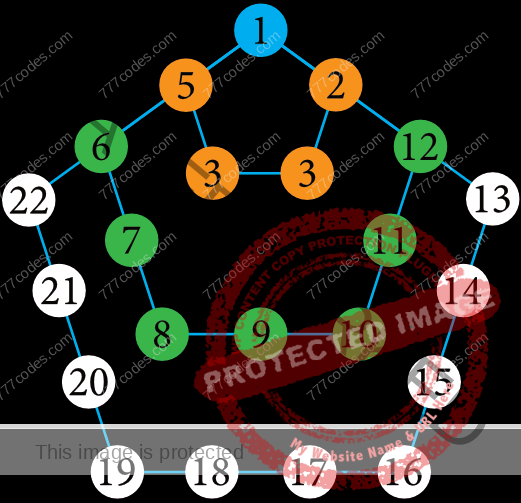 -<>-
-<>-

-<>-
-<>-
Hexagonal numbers are polygonal numbers that are arranged after a hexagon with 6 sides.
Hexagons can be divided into a triangle or a rectangle. Every second triangle is a hexagon.
Their order can be found with the formula: 2*n2 – n = n*(2*n – 1) = (2*n*(2*n – 1))/2.

-<>-
 -<>-
-<>-
-<>-
Heptagonal numbers are polygonal numbers that are arranged after a heptagon with 7 sides.
Their order can be found with the formula: (5*n2 – 3*n)/2.
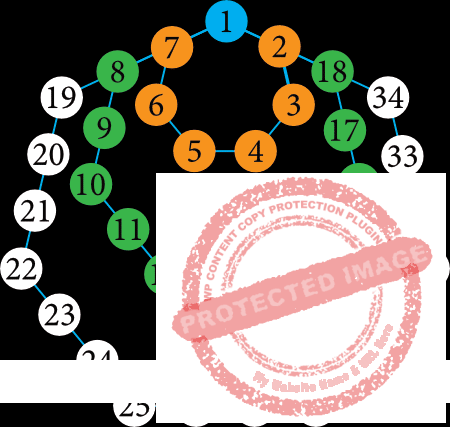
-<>-

-<>-
-<>-
Octagonal numbers are polygonal numbers that are arranged after an octagon with 8 sides.
Their order can be found with the formula: 3*n2 – 2*n.
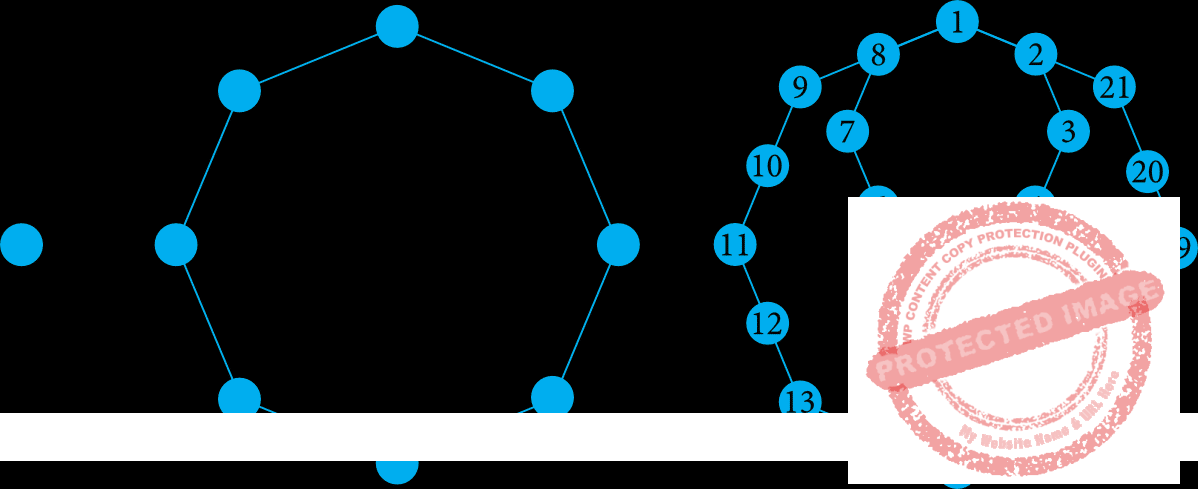
-<>-
 -<>-
-<>-
-<>-
Star numbers can be found with the formula: 6*n*(n-1) + 1
Exterior Stars is an alternative polygonal that is the outer triangles of a Star.
Exterior Stars formula: 6*n*(n + 1)/2
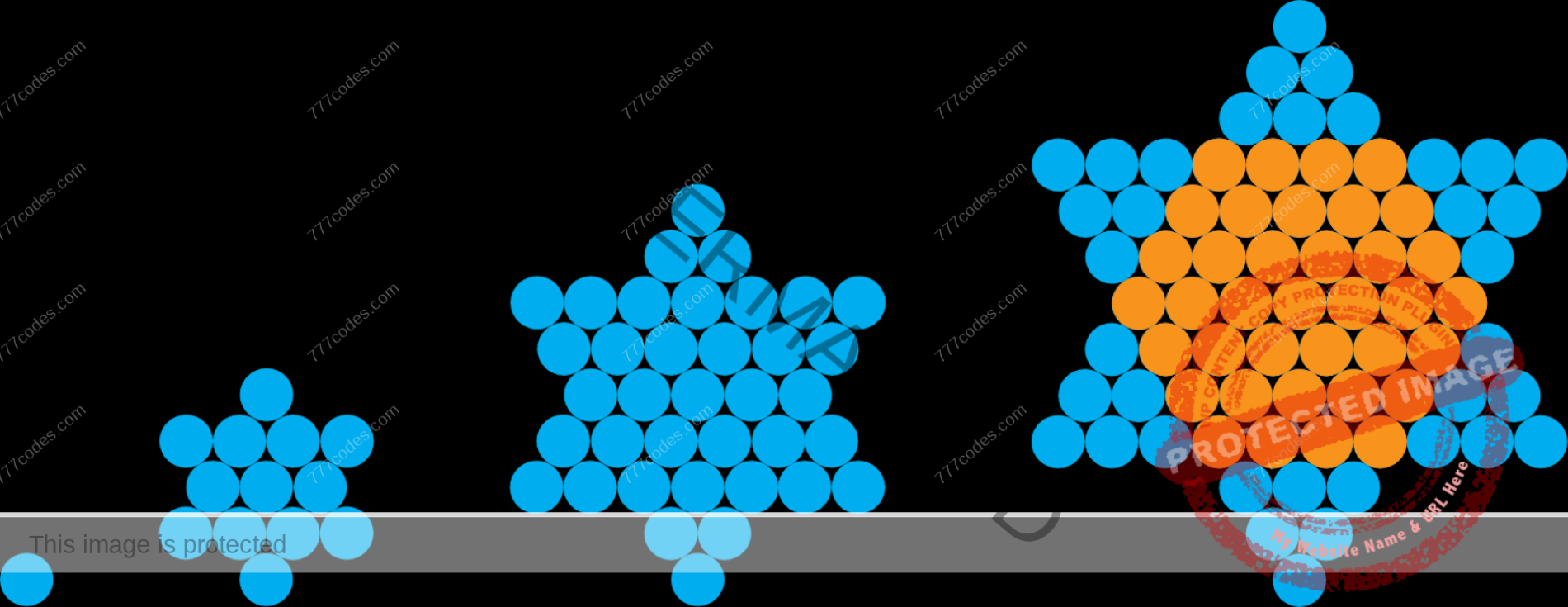

-<>-
-<>-
Centered hexagonal numbers are found in the heart of a star. Their order (o) can be found with the formula: 3*n*(n – 1) + 1
Example: The 7th centered hexagon = 3*7*(7 – 1) + 1 = 127.


-<>-
-<>-
4 first Centered Triangles
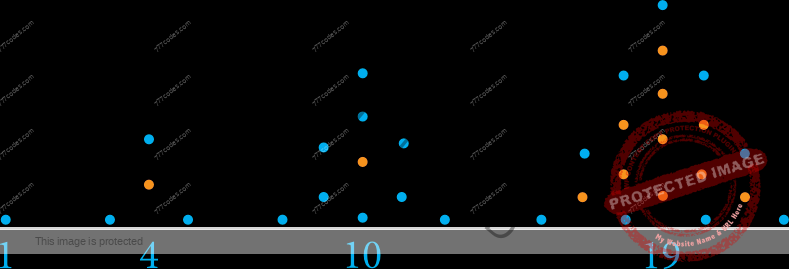
-<>-
-<>-
4 first Centered Squares

-<>-
-<>-

-<>-
-<>-
Cubic numbers are 3-dimensional polygonal numbers.
Their order (o) can be found with the formula: n*n*n.
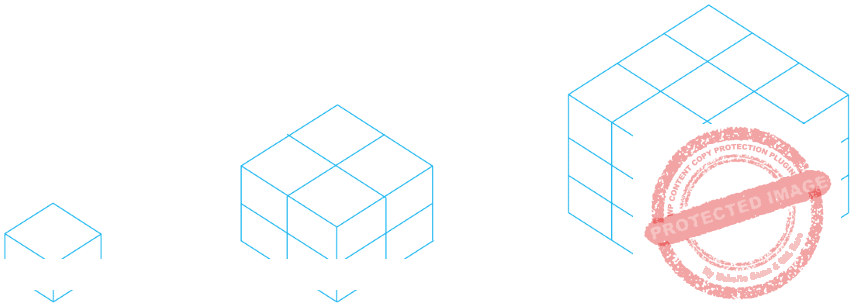
 -<>-
-<>-
-<>-
 -<>-
-<>-
-<>-
 -<>-
-<>-
-<>-
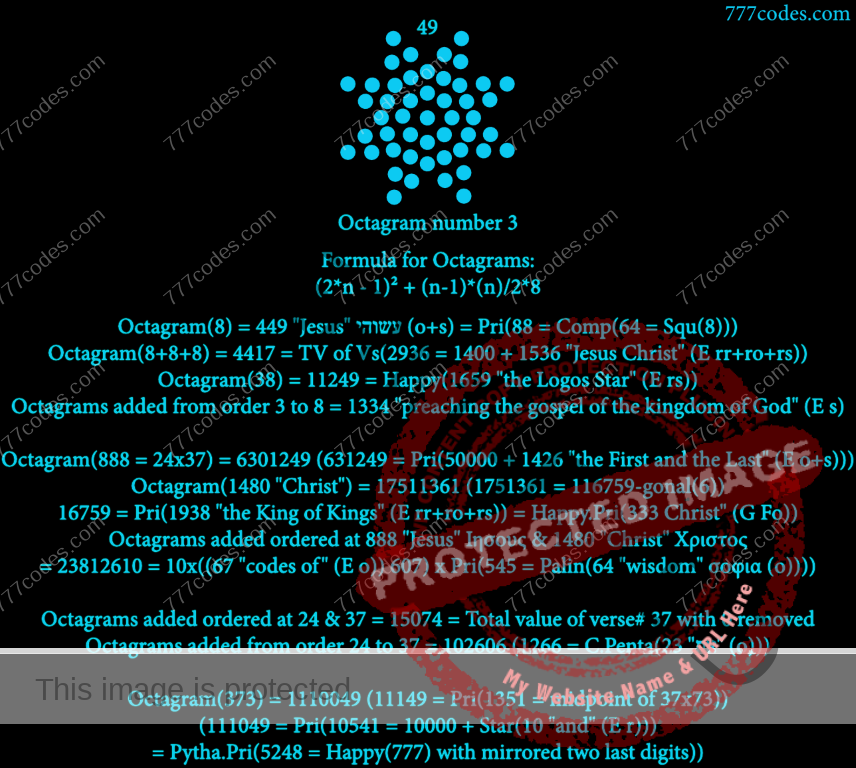
-<>-
-<>-
-<>-
Most of these polygonal numbers are defined by their sides, where rectangles are the first polygonal number with two sides.
Rectangular numbers start off with number two, so they seem to be not that important in the opening codes of the Bible.
– Rectangular numbers (2-gonal)
– Triangular numbers (3-gonal)
– Square numbers (4-gonal)
– Pentagonal numbers (5-gonal)
– Hexagonal numbers (6-gonal)
– Heptagonal numbers (7-gonal)
– Octagonal numbers (8-gonal)
– Nonagonal numbers (9-gonal)
– Decagonal numbers (10-gonal)
-<>-
And so on, I will just term them as 11-gonal, 12-gonal, 13-gonal… after these. Order 1, 2 & 3 are never used in a gonal number.
777-gonal(1) = 1 — 777-gonal(2) = 777 — 777-gonal(3) = 2328 = perimeter of Tri(777) [order 3 is always a perimeter of Tri…].
Adding 2-dimensional polygons up to a specific order creates a 3-dimensional version of that polygonal number of the same order.
So triangles added up to order 7 = 84 = pyramidal number 7. A pyramidal is a 3-D triangle.
-<>-
s = number of sides in the polygon/polygram n = order of polygon/polygram
Formula for all Polygons: ((s-2)*n2+(4-s)*n)/2
Formula for all Centered Polygons: ((s-2)*n2+(4-s)*n)/2 + (n * (n-2) + 1) [will be written like this: s-C.gonal(n)]
Formula for all Polygrams: ((s-2)*n^2+(4-s)*n)/2 + (n * (n-2) + 1) + n*(n-1)/2*s [will be written like this: s-gram(n)]
-<>-
The number properties program on the Math Tools page at my website gives you the opportunity to input a number up to 10 billion and it will show all mathematical properties of it ranging from: Primes, Composites, Pythagorean Primes, Happy numbers, Lucky numbers, polygons, c.polygons & polygrams. It will check if a number is a sum up to a specific order of mathematics also.
-<>-
Let us take a look at some alternative polygons, the following images comes from Leo Tavares & John Elias.
-<>-
Rhombus Triangles
-<>-
 -<>-
-<>-
-<>-
Rhombus Stars
-<>-

-<>-
-<>-
2nd Pentagons
-<>-

-<>-
-<>-
2nd Octagons
-<>-

-<>-
 -<>-
-<>-
Standard (Mispar Hechrachi) system is the primary system. It is regarded as “standard” since it is the original values of the letters.
Ordinal (Mispar Siduri) system is the placement values.
Reduced (Mispar Katan) system goes from 1 to 9 & starts over on 1 again (same as the standard system when zeroes are removed).
The ancient Hebrews used these three gematria systems. They called them & still call them:
Mispar Hechrachi, Mispar Siduri & Mispar Katan. They are the central gematria systems.
-<>-
Full spellings of the letters are where we spell out how a letter is pronounced. This concept is only used in Hebrew and Greek.
α (Alpha), the first letter of the Greek alphabet, is fully spelled out like this Αλφα.
To find the Full reduced value of the letter α we add the reduced values of Αλφα: 1+3+5+1 = 10.
To find the Full ordinal value of the letter α we add the ordinal values of Αλφα: 1+11+21+1 = 34.
To find the Full standard value of the letter α we add the standard values of Αλφα: 1+30+500+1 = 532.
-<>-
If you look at the end of the Hebrew alphabet, you will see the letters that have an F in front of their names.
These are Final letters, and they are the Upper-case letters of Hebrew. The Upper-case letters are only used in the end of a word.
So the Hebrew alphabet consists of 22 letters. Soft value is when we use the values of 500, 600, 700, 800 & 900 on the Final letters.
This Sigma ς is usually used as a last letter in Greek words, I figured out that the Soft systems are used on Greek also: ς = 9/25/900.
-<>-
Reverse systems are also used & here. We simply reverse the reduced, ordinal, and standard systems where the first letter has the value of the last letter, and it goes down in values instead of up.
 -<>-
-<>-

-<>-
A starter system uses the ordinal system but it starts with any number other than 1.
Example: A=37 B=38 C=39… of “thirty seven” = 561. So we can say that starter 37 of “thirty seven” in English equals 561.
-<>-
-<>-
All Hebrew letters can serve as consonants, but four of them can be used as vowels which are: Aleph א, Hey ה, Vav ו & Yod .י
The full central name of God is “The Lord God” יהוה אלהים.
“The Lord” יהוה is made up of three of these letters (והי), while “God” אלהים starts with the remaining letter (א).
The values added of these Vowels is 1+5+6+10 = 22 (number of letters in the Hebrew alphabet) = 1 “α” (o) + 21 “φ” (o).
-<>-
Accented letters (ֱלֹהִ֔מְַח – – – άὐὲὐֶ֖) have markings on them that are there to give a more accurate pronunciation of the letter.
An iota subscript is a diacritic mark that represents an Iota (ι) placed under the letter. If it occurs you should add an Iota after it.
It can occur with the vowel letters eta (η), omega (ω), and alpha (α). Here are some examples of iota subscripts: ᾷῇῷ.
-<>-
-<>-
Hebrew is read from right to left & it is the mother alphabet. Since the Greek alphabet comes from the Hebrew alphabet.
These two alphabets are the only alphabets with the same gematria system (standard).
The English alphabet comes from the Latin alphabet, which again comes from the Greek alphabet.
 -<>-
-<>-
The reverse gematria systems are also used on the English alphabet.
 -<>-
-<>-
-<>-
-<>-
The symbolic meanings are shrouded in mystery but we know each of the Hebrew letters has 3 properties:
1. It is a letter – – – 2. It can be a number – – – 3. It can have a symbolic meaning related to the ancient sign or be used as a word
-<>-
Let’s see how the Hebrew letters are used as words (based on my own research, so there is probably more that could be added here):
ב Beth can be used for “in” or “Into”.
ח Hey can mean “the” or “of ”.
ו Vav is used for “and”.
י Yod can mean “unto”.
ל Lamed can mean “the”, “of” or “to”.
-<>-
-<>-
The early version of the alphabet existed between the 19th or 20th century B.C to the 12th century B.C.
However, the 19th & 20th-century date is taken from the earliest known finding of the Alphabet; and further discoveries may set that date even more back in history as the owner of the image below states.
The middle version of the alphabet existed from the 12th century B.C to the 4th century B.C.
The late version of the alphabet existed from the 5th century B.C and evolved itself into the modern Hebrew Alphabet used today.
-<>-

-<>-
The Greek Alphabet we use today was adopted from the middle Hebrew alphabet in the 12th century B.C. The Greek letters was very similar to that version of the Hebrew alphabet in its early days but lost its similarities as it evolved through time.
See the DVD video “A History of Hebrew” by Jeff A. Benner for more information on this. You can buy it on Amazon on this link:
https://www.amazon.com/History-Hebrew-Its-Language-Philosophy/dp/1621370593 It is also uploaded on YouTube.
Special thanks to Jeff A. Benner and his wife at https://www.ancient-hebrew.org/ for letting me use the image above.
Meaning of Numbers. Methods & Abbreviations
These are the general meanings of a few numbers. You can find more extensive info on this at:
https://rcg.org/questions/p144.a.html
https://www.Biblestudy.org/Bibleref/meaning–of–numbers–in–Bible/3.html
1. Unity or beginnings – – – “Hear, O Israel: The LORD our God is one LORD“ [Deu 6:4]
2. Companionship, Witness, Division – – – 2 testaments that the Bible is divided into
3. Completeness or Resurrection – – – “For there are three that bear record in heaven,
the Father, the Word, and the Holy Ghost: and these three are one.” [1 John 5:7]
4. Creation – – – God finished the material Universe on the fourth day of creation.
5. God’s grace, goodness – – – the 5 senses: sight, hearing, taste, smell and touch.
6. Man’s number – – – God created man of the 6th day of creation.
7. Spiritual Perfection – – – “And on the seventh day God ended his work which he had made;“ [Genesis 2:2]
8. New beginning – – – Man will rule the earth for 6000 years and then comes the 1000 year kingdom with
Jesus reigning the earth as King. After that in the start towards the 8th millennium, we get the merging of heaven and earth as a new beginning.
9. Divine completeness & Finality – – – “about the ninth hour Jesus cried“ [Matt 27:46], “he said, It is finished:
and he bowed his head, and gave up the ghost. “ [John 19:30]
10. Testimony, Law & Completeness of order – – – The 10 commandment given to Moses at Mount Sinai.
11. Chaos & Judgment – – – In the 11th chapter of the Bible we see men rebelling against God when building
the tower of Babel.
12. Structural beginning or Governmental perfection – – – 12 Tribes, 12 disciples, 12 hours a day & 12 months.
13. Sin & Rebellion – – – “Twelve years they served Chedorlaomer, and in the thirteenth year they rebelled.“ [Gen 14:4]
40. Trial and Testing – – – Israel has to wander the desert for forty years as punishment for sins.
-<>
One should take note that these meanings have little effect in the codes of gematria since God uses those numbers differently there.
-<>-
-<>-
H/Heb = Hebrew – – – G/Gr = Greek – – – E/Eng = English – – – r/red = reduced – – – o/ord = ordinal – – – s/std = standard
rr = reverse reduced – – – ro = reverse ordinal – – – rs = reverse standard
Fr = Full reduced – – – Fo = Full ordinal – – – Fs = Full standard
Sr = Soft reduced – – – So = Soft ordinal – – – Ss = Soft standard
sr = starter
m = modern spelling and I will always use it in brackets like this: [m]
“thirty and seven” in English standard is written like this: “thirty and seven” (E s) = 1822 = 1800 + Pri-o(73).
Starter 37 of “thirty seven” in English is wiritten like this: “thirty seven” (E sr37) = 561 = mirror of 165 “thirty seven” (E o).
-<>-
– Pri = Prime number – – – Example: 7 = Prime number 5 & it will written like this: 7 = Pri(5)
– Pri-o = Prime order of – – – Example: 5 = Pri-o(7)
– Comp = Composite number Comp-o = Composite order of Pri+Comp = Prime(n) + Comp(n)
– PP = Pythagorean prime number PP-o = Pythagorean prime order of Pri+Pytha = Prime(n) + PP(n)
– Happy = Happy number Happy-o = Happy order of Happy.Pri = Happy Prime
– Lucky = Lucky number Lucky-o = Lucky order of Lucky.Pri = Lucky Prime
– Fibo = Fibonacci number Happy+Lucky = Happy(n) + Lucky(n)
– Rec = Rectangle number (2-gonal) Happy&Lucky = is both Happy & Lucky at the order of n
– Tri = Triangle number (3-gonal) C.Tri = Centered Triangle TriHepta = Triangle(n) + Heptagon(n)
– Squ = Square number (4-gonal) C.Squ = Centered Square TriOcta = Triangle(n) + Octagon(n)
– Penta = Pentagon number (5-gonal) C.Penta = Centered Pentagon C.TriHepta = C.Tri(n) + C.Hepta(n)
– Hex = Hexagon number (6-gonal) C.Hex = Centered Hexagon C.TriOcta = C.Tri(n) + C.Octa(n)
– Hepta = Heptagon number (7-gonal) C.Hepta = Centered Heptagon TriHeptagram = Tri(n) + Heptagram(n)
– Octa = Octagon number (8-gonal) C.Octa = Centered Octagon TriOctagram = Tri(n) + Octagram(n)
– Nona = Nonagon number (9-gonal) C.Nona = Centered Nonagon C.TriHeptagram = C.Tri(n) + Heptagram(n)
– Deca = Decagon number (10-gonal) C.Deca = Centered Decagon C.TriOctagram = C.Tri(n) + Octagram(n)
– Star = Star number
– Cube = Cube number
– 3-D = 3-D polygonal number – – – Example: 84 = 3-D.Tri(7) – – – 140 = 3-D.Squ(7)
-<>-
-<>-
Every verse in the Bible seems to be encoded, and the verse order usually defines the codes in each verse.
There is a lot of focus on beginning, end & center here, and I have noticed that God likes to put special codes in the center.
1. Vs = Verse# = Verse order
2. No.W = Number of Words
3. No.L = Number of Letters
4. No.W + No.L = Number of Words + Number of Letters
5. TV = Total Value (sum of all words)
6. FLL = First & Last Letters [usually new series of messages, TV is the previous method]
7. CL = Center Letter(s) [If the verse has two center letters; then you add them]
8. FLCL = First, Last & Center Letters [usually end of messages]
9. L. surr. CL = Letters surrounding Center Letter(s) — This method aligns with the CL
10. 2 FLL = 2 First & 2 Last Letters [can be new series of messages, FLCL is the previous method]
11. 3/4 CL = 3 or 4 Center Letters
12. 2 FLL + 3/4 CL = 2 First Letters & Last Letters + 3 or 4 Center Letters [End of messages]
13. 2 L. surr. CL = 2 Letters surrounding Center Letter(s) — This method aligns with the 3/4 CL
14. 3 FLL = 3 First & Last Letters
15. 7/8 CL = 7 or 8 Center Letters
16. 3 FLL + 7/8 CL = 3 First & Last Letters + 7 or 8 Center Letters
17. 3 L. surr. CL = 3 Letters surrounding Center letters — This method aligns with the 7/8 CL
18. FLW = First & Last Words [usually new series of messages. TV is the previous method but the 2 FLL + 3/4 CL can also be be that.]
19. CW = Center Word(s) [If the verse has two center words; then you add them]
20. FLCW = First, Last & Center Words [usually end of messages]
21. W. surr. CW = Words surrounding the Center Word(s) — This method aligns with the CW
22. 2 FLW = 2 First & 2 Last words [usually new series of messages, FLCW is the previous method]
23. 3/4 CW = 3 or 4 Center Words
24. 2 FLW + 3/4 CW = 2 First, 2 Last Words & 3 or 4 Center Words [End of messages]
25. 2 W. surr. CW = 2 Words surrounding Center Word(s) — This method aligns with the 3/4 CW
26. 3 FLW = 3 First & last Words
27. 7/8 CW = 7 or 8 Center Words
28. 3 FLW + 7/8 CW = 3 First & last Words + 7 or 8 Center Words
29. 3 W. surr. CW = 3 Words surrounding Center Word(s) — This method aligns with the 7/8 CW
30. FLL + FLW = First & Last Letters + First & Last Words [usually new series of messages]
31. CL + CW = Center Letter(s) + Center Word(s)
32. FLCL + FLCW = First, Last & Center Letters + First, Last & Center Words [usually end of messages]
33. L. surr. CL + W. surr. CW = Letters surrounding Center Letter(s) + Words surrounding Center Word(s) — aligns w. CL + CW
34. 2 FLL + 2 FLW = 2 First & Last Letters + 2 First & Last Words [usually new series of messages, FLCL + FLCW is the previous…]
35. 3/4 CL + 3/4 CW = 3 or 4 Center Letters + 3 or 4 Center Words
36. 2 FLL + 2 FLW + 3/4 CL + 3/4 CW = 2 First & Last Letters + 2 First & Last Words + 3 or 4 Center Letters + 3 or 4 Center Words
37. 2 L. surr. CL + 2 W. surr. CW = 2 Letters surrounding Center Word(s) + 2 Words surrounding Center Word(s)
38. 3 FLL + 3 FLW = 3 First & Last Letters + 3 First & Last Words
39. 7/8 CL + 3/8 CW = 3 First & Last Letters + 3 First & Last Words + 7 or 8 Center Letters + 7 or 8 Center Words
40. L. up to CL = Letters added up to Center Letter (if there are two center letters then add to the first) [New series of messages]
41. L. from CL = Letters added from Center Letter (if there are two center letters then add from the second) [u. end of messages]
42. W. up CW = All words added up to CW (if there are two center words then add up to the first) [usually new series of messages]
43. W. from CW = All words added from Center Word(s) to the last word (if there are 2 CW then add from the 2nd) [End of mess.]
44. FL + CL = First Letter + Center Letter [New series of messages]
45. LL + CL = Last Letter + Center letter [usually end of messages]
46. FW + CW = First Word + Center Word [usually a new series of messages]
47. LW + CW = Last Words + Center Word [End of messages]
48. A.L.E FLL = All Letters Except First & Last letters [New series of messages]
49. A.L.E CL = All Letters Except Center Letter(s)
50. A.L.E FLCL = All Letters Except First, Last & Center Letters [End of messages]
51. A.W.E FLW = All Words Except First & Last Words [New series of messages]
52. A.W.E CW = All Words Except Center Word(s)
53. A.W.E FLCW = All Words Except First, Last & Center Word(s) [End of messages]
54. UC = Ultra Calculation = (number of letters x product of letters) divided by (number of words x product of words)
-<>-
The Approximately Equal symbol (≈) is used for approximations. I will use this often with the UC when I do not want to show more decimals of the result. I will also use it with the ultra calculation to not show decimals at all.
But I will not use it to round up or down a decimal number with the ultra calculation method unless I make it obvious.
Decimal numbers a.k.a decimals are the numbers after the decimal point. Example: 1415 is seen in the decimals of 3.1415 (π).
-<>-
There are 7 primary methods, and the yellow colored here can consist of 3 & 7 words:
TV, FLW, CW, FLCW, 2 FLW, 3/4 CW & 2 FLW + 3/4 CW.
-<>-
-<>-
+1 method is where we use +1, +10, +100, +1000 or even +10 000 to find a value. Example: 137 = 100 + 37.
This also includes numbers like 400 (Tav ת last letter of Hebrew), 500, 800 (Omega ω last letter of Greek), 1200 (400+800), 1500….
We rarely see the use of +200, +300 & +700.
Extended digit(s) is where we add extra digit(s) to the number in either first, middle or last digit. Example: 866 = 86.
0 removed is when we remove a zero or zeroes from a number. Example: 7001 = 71.
Merging of numbers. Example: 6112 is 611 “Torah” (H s) merged with 112 “The Lord God” (H s).
Adding or multiplying mathematical properties. Example: 28 = Pri(2) x Pri(2) x Pri(5) – – – 2x2x5 = 20 “seven” (E r).
Upsidedown digit is when you turn 9 upsidedown so it represents number 6. This means that 999 can be a code for 666.
I have to do some shortcuts in this book: “7” = “seven” – – – ”37” = “thirty and seven”
“137” = “a hundred thirty and seven” or “one hundred and thirty seven”
“7-7-7” = “seven seven seven” – – – “777” = “seven hundred seventy and seven” – – – “777” [m] = “seven hundred seventy seven”
-<>-
I will also count words or letters by rotation in cycles by the number of words or letters in a verse. Let’s use Genesis 1:1 as an
example here, this verse has 28 letters and if we want to count to order 37 by rotation, we count to letter 28
& start on the first letter again as order 29 and count up to the 9th letter that hits order 37 by rotation in this case.
Here are three rules concerning the rotation (rot.) method:
1. When I write “W# by rot.” it is always by the number of words in that verse.
2. When I write “L# by rot.” it is always by the number of letters in that verse.
3. When I write “Vs by rot.” it is always by the number of verses in the Bible (31102).
There are tools where you can add words or letters counted by rot. on my website on the Diverse calculators page.
-<>-
The first thing we should know is that many words/phrases have the same value.
The way these codes work is that you have to pick the right word/connection according to the context in where you find it.
There is never just 1 message in the codes but always a series of messages. Either they come in 2, 3, 4… Steps.
So it’s like a puzzle where you need to know what values words have and God picks a
Letter/Word/Phrase or even a physics approximation to represent every single verse order.
The same with numbers. Because you will see that God is very accurate in his codes and messages; they only align perfectly if you understand what he is doing and know the values of specific important words.
-<>-
To see how God encodes words/phrases, we can start with the Hebrew word “riddle(s)” חידה chiydah.
It has the values of: 18/27/27 (red = 18 – – – ord = 27 – – – std = 27)
18 = “of God” האל (o) = “in the firmament” בהרקיע (r) – – – 27 = “In the beginning” εν αρχηι (r) – – – 27 = “riddles” חידה
ord + std = 54 = Comp(37 “of wisdom” חכמה (o)) – – – red + ord + std = 72 “in the firmament” בהרקיע (o)
-<>-
The ordinal & standard systems are the primary gemtria systems, and here we see the red, ord & sta values of “riddles” is
18+27+27 = 72 (mirror of its ordinal & standard value) = “The Golden Ratio” (E r).
-<>-
-<>-
The sixth Hebrew letter Vav ו can mean “and”. Now, if we go to verse# 27 “riddles” and add the 6 “and” ו first words (ויברא אלהים את האדם בצלמו בצלם) = 1000 + “God” אלהים (pronounced as Elohyim or Elohim).
And we see the center word of verse# 27 חידה “riddles” = 86 “of God” אלהים.
Another example of how God can connect: 400 + (28 = Tri(7) = Happy(7) = Pri(2) x Pri(2) x Pri(5) – – – 2x2x5 = 20 “seven” (E r))
= CW of Vs(100 + 37 “seal” (E o) = 137 “of God” (E s)) = “in the midst” בתוך = “riddles” חידות.
-<>-
Another thing to mention here is that there can be several ways of writing a word in Hebrew.
And this is like English where we have different words for the same meaning. The above mention of God is the plural form of it.
The single form is written like this: “God” אל El with a value of = 31.
There is a great riddle about these words. To understand it we must decode the plural form which is mentioned first in the Bible in the first verse. 86 = 2x 43 “seal” חתם (ord) = Pri(2) x Pri(15) – – – 2×15 = 30 “of” ל = “God” אלהים.
The value of God in single form is 31 = “seal” חתם (Fr) = Pri(12 “of” (E r)) = “God” אל.
-<>-
Hebrew & Greek are more old & basic languages than English. It is not critical if you write “I like codes” or “codes I like” there.
You can often bind words like: “of”, “the”, “for”, “is”, or “with” to Hebrew words.
-<>-
Regarding the word & letters counts used in this book, you should know that interlinear WLC & the original WLC have the same counts up to verse# 4023. After that it deviates. So, if I write word# 314 of the Bible it means it has this order in both these versions.
All English verses in this book are taken from the KJV. So, when you see Eng std verse# 777 it means it is verse# 777 in the KJV.
-<>-
-<>-
-<>-
Take note that I copy-paste the info in here from the book so I write from the perspective of the author and you as the reader here on this website.
I cannot be 100% consistent in how I display Hebrew words/phrases since it switches places with the result which is a common bug. So I have to write אלפא “Alpha” like this instead of “Alpha” אלפא.
I usually write it as the last example in the book, but I can’t always do that here.
The book will not be affected by this bug so it will be better to read.
You real journey into the numerical Bible codes of gematria begins in chapter 2.
-<>-
-<>-
-<>-